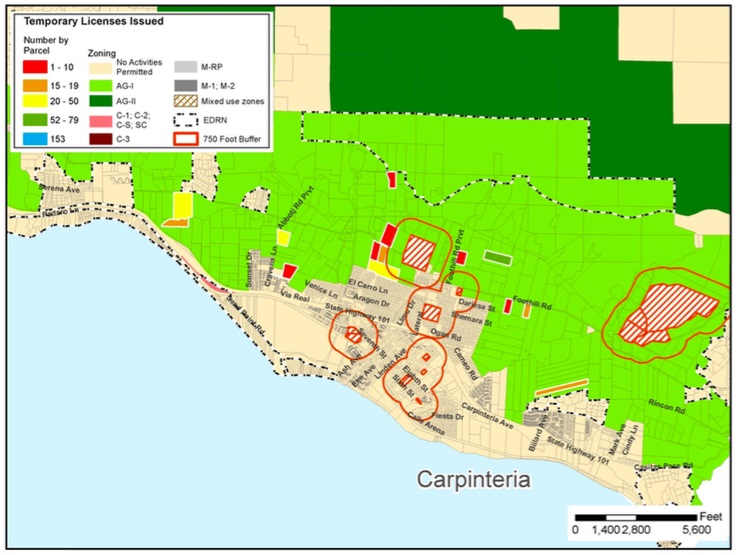Santa Barbara County Sets Carpinteria Cannabis Grow Cap
Neighborhood Activist Anna Carrillo Scores a Victory in Limiting Pot Acreage
It is a mystery how many acres of cannabis are grown in Carpinteria. That did not stop the county supervisors from imposing a cap.
“It was definitely successful for Carpinteria,” said Anna Carrillo, a longtime Carpinteria resident who has emerged as a leader in pushing back against the rapid expansion of cannabis farms in Carp’s four-mile stretch along California’s coast.
It is no secret that the rustic beach town of Carpinteria has rapidly transformed into a haven for cannabis growers. With 333 acres of total greenhouses, the Carpinteria Valley has become the perfect place to grow pot. It is unclear, though, how many acres exist. According to the county’s self-reported registry, 52 cannabis cultivators are in Carpinteria. About half of those operators have requested authorization from county regulators to receive temporary state cultivation licenses. In addition, state regulators have not disclosed how many more acres will be cultivated as a result of pending applications.
The county supervisors set the cap at precisely 186 acres — an amount determined to be the Goldilocks solution. Representatives from Cate School had called for 145 acres while City of Carpinteria officials advocated for 225 acres. (Cannabis cultivation occurs on county lands outside of city limits, so city officials have no actual oversight.)
“Reasonable people in the Carpinteria Valley understand marijuana is here to stay,” said Das Williams, the county supervisor for the area, “but don’t necessarily want to be surrounded everywhere in the valley by it.”

Specifically, Williams and his colleagues wrangled with whether or not to cap the cannabis acreage allowed in the Carpinteria Agriculture Overlay Zone. County staff recommended no limit. They said the most effective cap “would be the market itself.” Staffers cautioned that a cap “creates an artificial shortage that is likely to affect business decisions,” adding that some operators might hoard licenses for future plans or to stifle competition. While some of the supervisors agreed with this laissez-faire approach, a majority of the board ultimately decided the concentration in Carpinteria necessitates government intervention.
Santa Barbara County currently has the most temporary cannabis cultivation licenses in the entire state. “I’m not embarrassed at all by the number,” said County Supervisor Steve Lavagnino, who represents the Santa Maria area. It means the county is leading the way in compliance, he said. “SLO [San Luis Obispo] shows a zero, when I know for a fact that there are dozens of illegal operations in SLO County.” Similarly, Williams noted he could see cannabis in Ventura from Carpinteria.
Capping the acreage was just one victory for Carrillo. The county supervisors also prohibited outdoor cannabis farms in the Coastal Zone, which extends one mile from the shore.
Some Carpinteria growers said they were ultimately fine with the cap. They hoped it would give their neighbors peace of mind.



